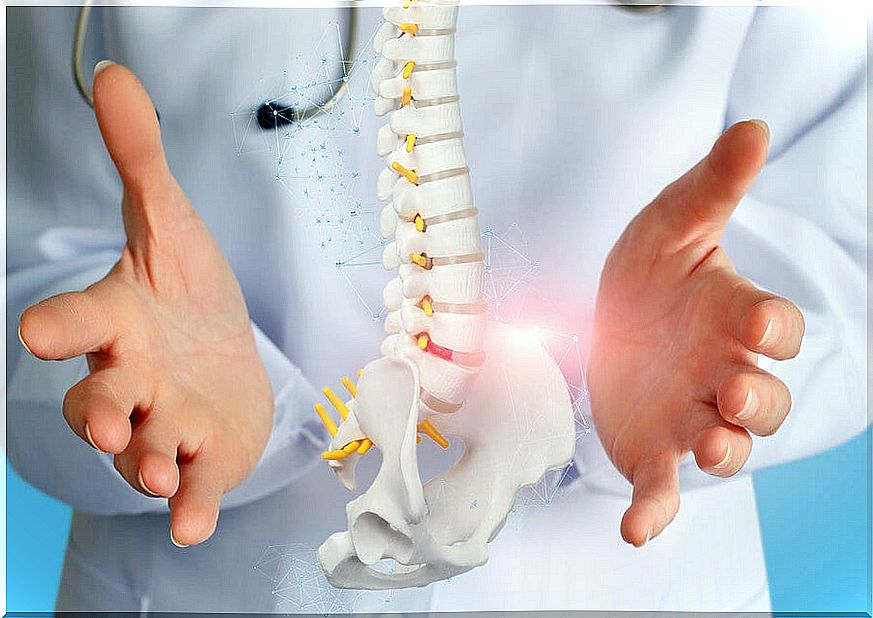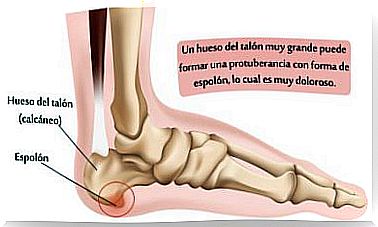What Is A Vertebral Angioma? Causes, Symptoms And Treatment
A vertebral angioma, also known as a hemangioma , is a vascular structure made up of tissue from blood vessels that are located within the vertebra. This usually happens due to an error in embryonic development.
They are usually talked about as if they were malignant tumors, but in reality they are a malformation of the blood vessels. Therefore, they are non-cancerous lesions that normally develop in the chest part of the spine.
In most cases, they are without symptoms. They are usually diagnosed with different tests such as MRI, CT scan or biopsy.
The origin and cause of its formation is not exactly known, but the most widely accepted theory is that angiogenesis is involved in the formation of angiomas.
What are the symptoms of vertebral angioma?

As we have discussed, a vertebral angioma is a growth of blood vessels in the vertebrae. Vertebrae are small bones that lie on top of each other to form the spinal column.
Vertebral angioma is usually asymptomatic and does not usually require treatment. There are situations when the patient may experience back pain, leg numbness, or paralysis due to a vertebral angioma. In these cases, the doctor should be consulted to decide the most appropriate treatment option.
In short, angiomas very rarely cause problems, it is very difficult to see a vertebral fracture caused by an angioma. The problem comes when these lesions grow, expand and cause more damage to the surrounding structures.
The most dangerous situation is that the angioma damages the spinal cord. This occurs when the angioma grows and directly damages the cord and compresses it. It can also happen that the vertebra is fractured and that it indirectly causes the damage. Another possibility is that the angioma bleeds and causes a bruise that compresses the marrow.
All these complications, when they occur, usually occur in the dorsal area of the spine. In addition, they affect women more frequently than men. It is important to be clear that, as we have mentioned before, vertebral angioma is not a malignant tumor or with the capacity to produce metastasis.
How is it diagnosed?
For the diagnosis of a vertebral angioma, imaging tests such as a scan and magnetic resonance are often used. Therefore, these imaging tests are indispensable in the diagnosis.
Most angiomas have their own characteristics that define them. However, those who are more aggressive may not have these characteristics. This situation complicates the work of specialists, since they can easily confuse angioma with another type of vertebral tumor.
When there is a situation in which the tumor type cannot be easily distinguished by imaging techniques, a biopsy is usually performed to study the tissue and make the correct diagnosis.
How is a vertebral angioma treated?

Normally, patients with an angioma do not usually need treatment, since there are no serious problems. As the spine is an area with many risks when performing an operation, it is usually recommended to carry out a treatment to reduce pain. This can be achieved through medication, epidural injections, or acupuncture.
Today, we have different treatments for less aggressive angiomas. Among these techniques we highlight:
- Radiation therapy: This technique involves applying X-rays directly to the problem site. The rays destroy the cells of the hemangioma and can stop its progression.
- Artery embolization: consists of preventing blood from reaching the angioma. Particles made of sponge or gelatin are injected through a catheter that will block the artery and blood flow to the angioma.
- Alcoholic injections or vertebroplasties: consists of injecting cement into the damaged vertebra.
As for the most aggressive, they usually resort to submitting the patient to surgery to decompress the spinal area. Sometimes a resection is carried out, that is, the injured area is removed, despite being the riskiest option and which is used when there is no other option.
It is also common to combine both the techniques used to treat less harmful angiomas with surgery.









